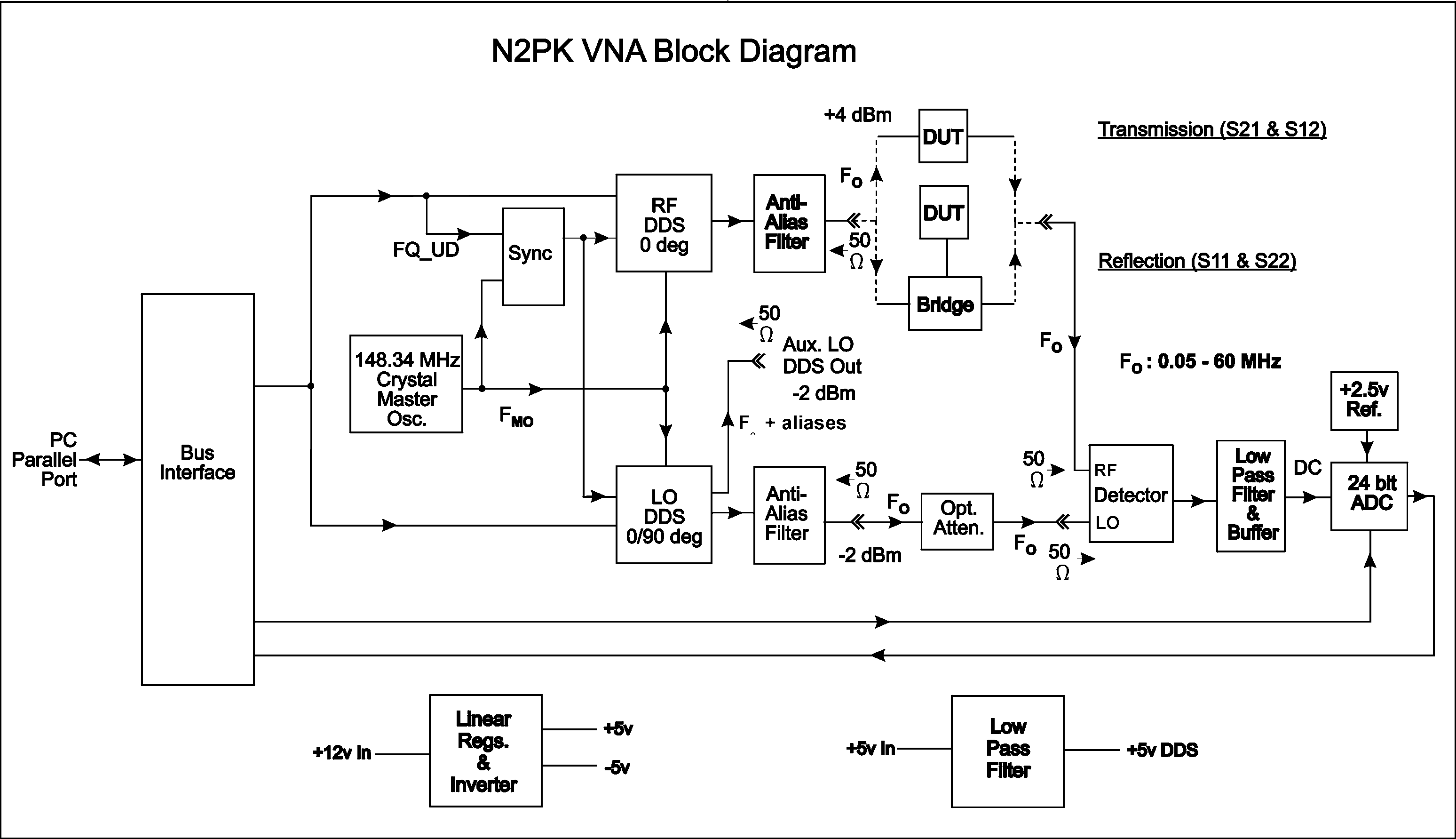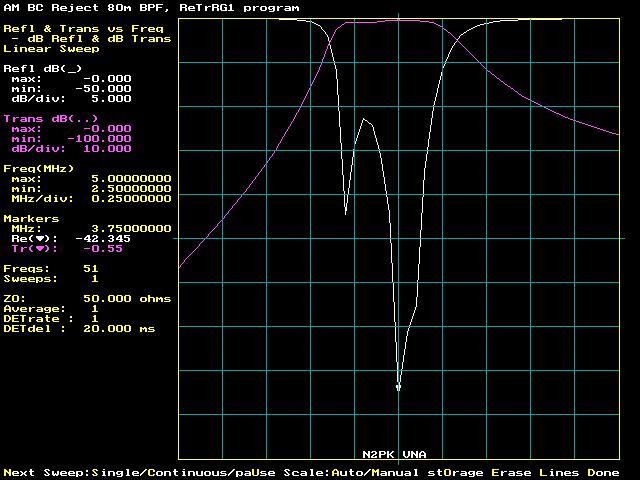From these three vector measurements at a single frequency, all DUT transmission characteristics, such as gain and phase, can be calculated. Group delay requires two or more frequencies.

Similarly, all impedance characteristics of the DUT can be measured at each frequency of interest using a standard Wheatstone type reflection bridge. Here, the DUT |VRF| and Theta are measured relative to three precision terminations. The terminations are typically an open, a short, and one that approximates the system reference impedance (usually 50 ohms). These three calibration standards also allow the use of other measurement fixtures (not strictly bridges) that provide improved accuracy for high or low DUT impedances.
|VRF| is quite easy to measure, but there are several different ways to determine the relative phase information Theta.
Most lab-quality VNAs use a superhet architecture that converts both the reference signal and the detected signal to a fixed IF for precision amplitude and phase detection. These conversions occur via conventional mixing or sampling. This architecture, as normally implemented, is complex and expensive. A much simpler architecture is used in the recent 'VNA on a chip' device - the Analog Devices AD8302, with its broadband logarithmic detection of amplitude information and high-speed logic for the phase comparison. The disadvantage here is considerably reduced accuracy compared to a lab-quality VNA.
This VNA is different - it uses a narrow-band direct-conversion architecture that is much simpler than superhet VNAs, but is also much more accurate than the log-detection devices. Because the Detector in this VNA converts down to DC, the only output available is a DC voltage, which is dependent not only on the magnitude of the RF voltage at its input, but also its phase relative to the RF signal at its LO input. Highly accurate measurements of this amplitude and phase dependent DC voltage are obtained using a precision linear analog detector, a 24-bit analog-digital converter (ADC), and precise phase control of the LO DDS.
The phase information is obtained, in a novel way, by making two sequential DC measurements for each frequency and test condition (Through, Open Detector, and DUT). In each case, the first measurement is made with the LO at the reference phase of 0 deg; the second measurement is made with the LO phase shifted by 90 deg. This process results in the quadrature or vector components of each signal at the Detector RF input.
The result is a very simple hardware architecture, which takes maximum advantage of modern developments: the ability of a computer-controlled DDS to generate precise frequencies and phase shifts; precision 24-bit analog-to-digital conversion; and the power of computer control and post-processing. The computer processing completely eliminates setup adjustments, and allows many common sources of measurement errors to be 'calibrated out'. This greatly simplifies home construction.


